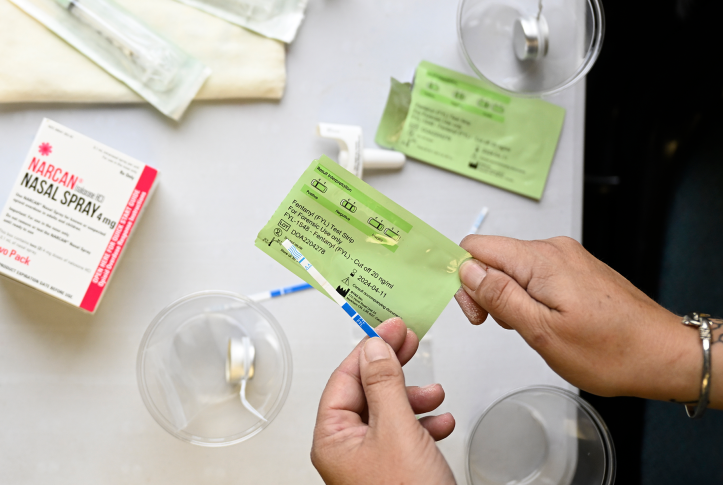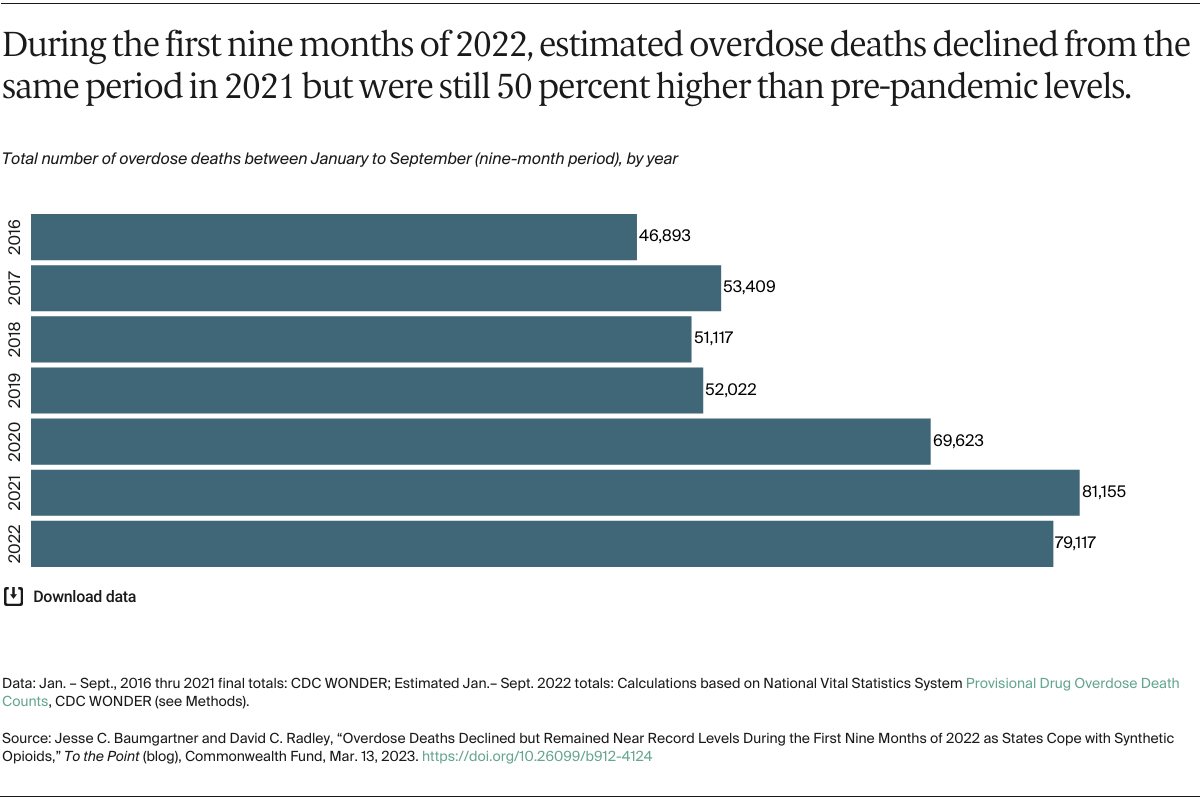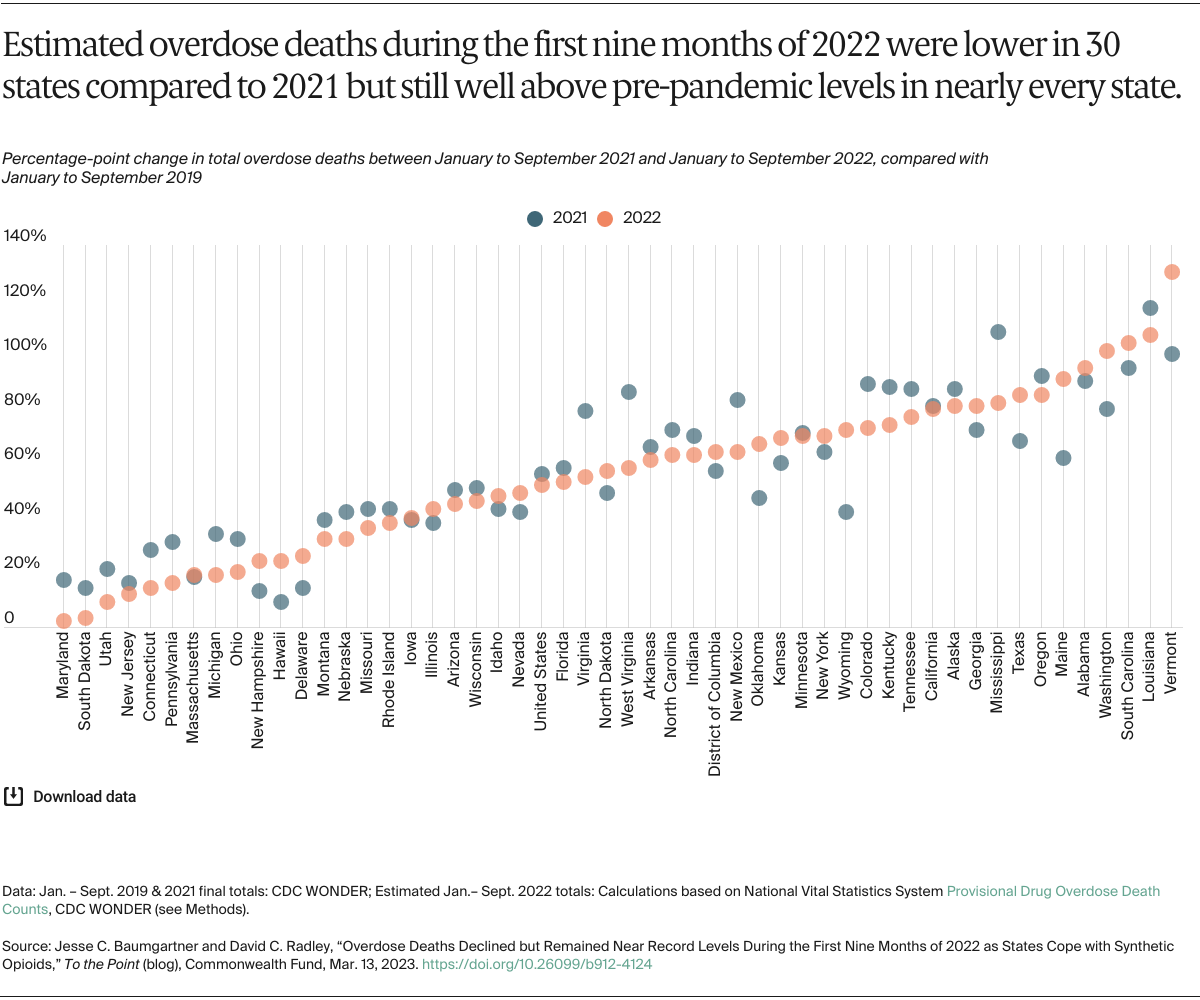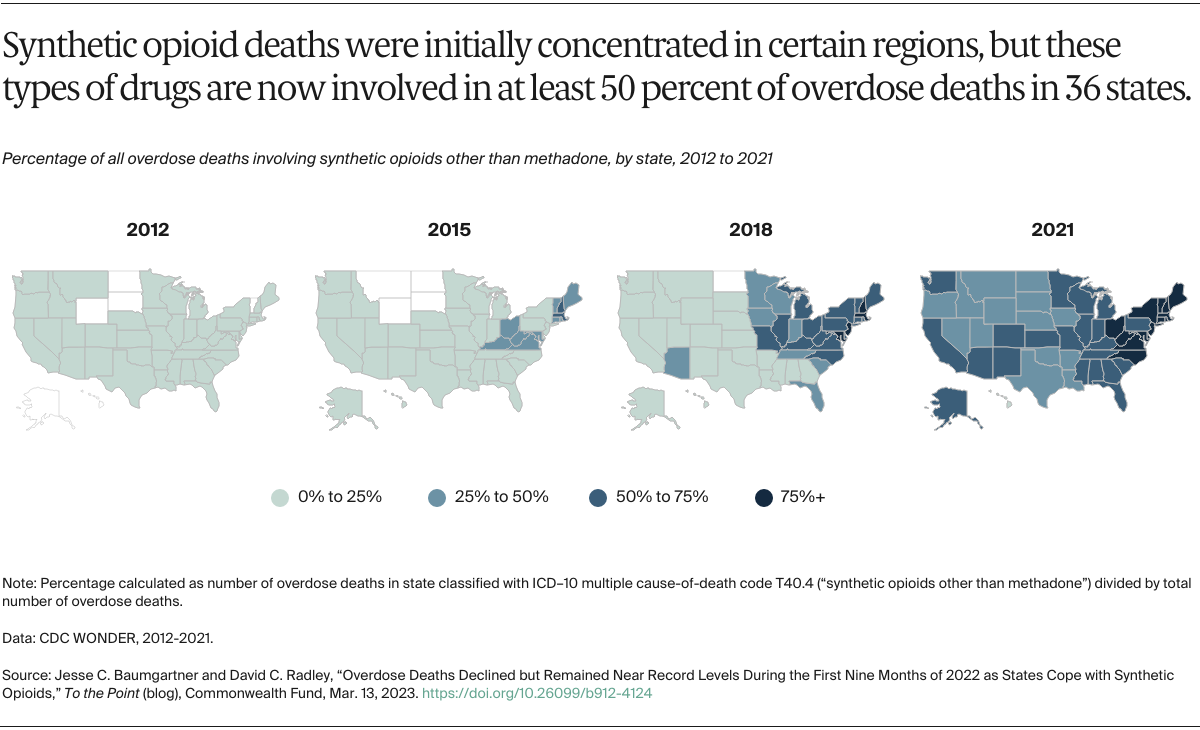Drug overdose deaths spiked after the start of the COVID-19 pandemic and during 2020 and 2021 claimed nearly 200,000 lives.
This surge has occurred alongside a rapidly changing U.S. drug supply. More potent synthetic opioids like fentanyl are now playing a role in nearly 70 percent of deaths.
In this post, we build on past tracking analyses and use provisional federal mortality data to assess the level of overdose mortality during the first nine months of 2022 compared to previous years, the impact of synthetic opioids on overdose rates, and how trends varied by state.
Overdose Mortality Declined During the First Nine Months of 2022
New federal provisional data suggest that drug overdose deaths dropped modestly in the first nine months of 2022, compared to the same period in 2021. In 2021, a record 106,699 lives were lost.
An estimated 79,117 Americans died from drug overdoses between January and September 2022, fewer than the 81,155 people who died during the first nine months of 2021, but still 50 percent higher than pre-2020 levels.








